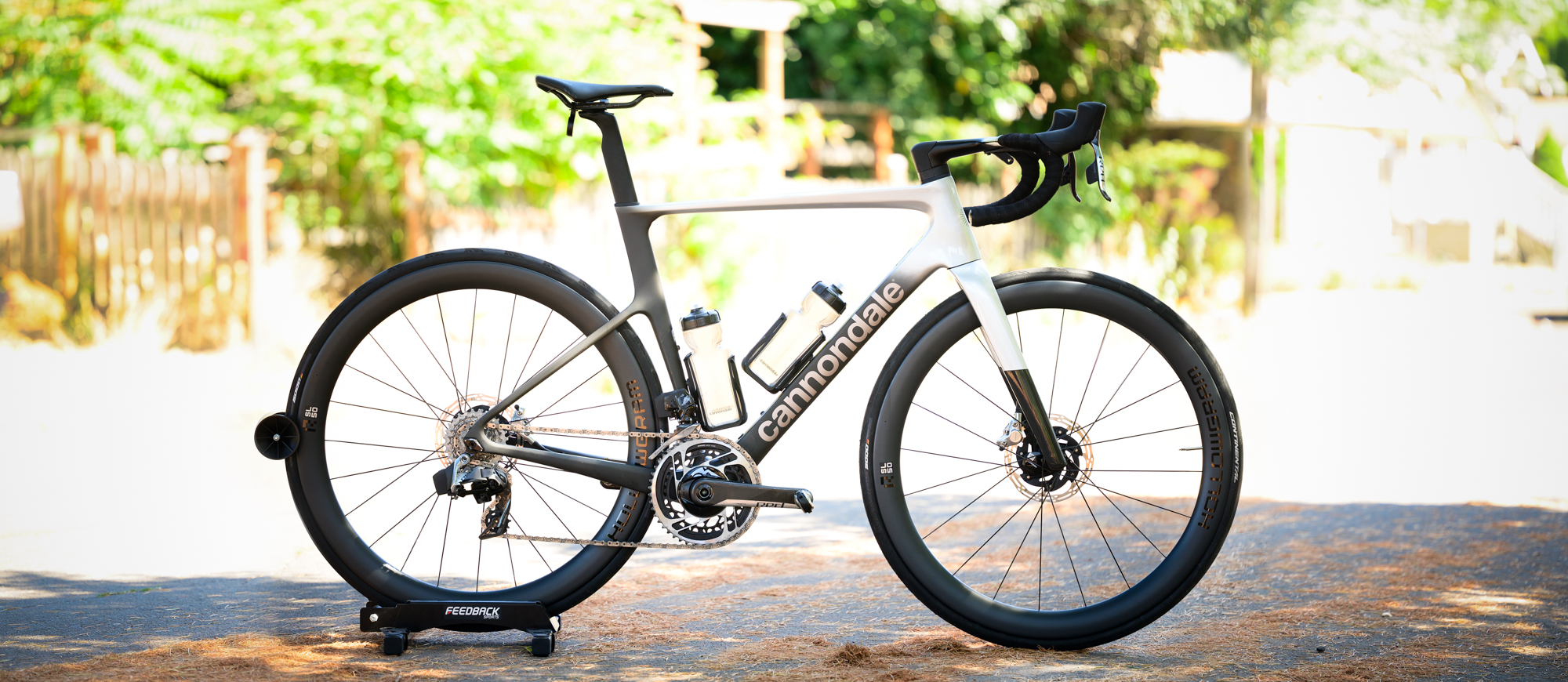Cyclingnews Verdict
While Cannondale still offers the SystemSix as a pure aero bike, the latest generation of the SuperSix EVO has gotten so aero it almost makes that bike irrelevant. At the same time, Cannondale has also leaned into a higher stack and shorter reach than competitors and made a “faster everywhere” bike that won’t limit what you can do with your bike. There are technically faster bikes on the market but if you want the kind of bike that’s going to serve you well outside of racing also, this is one of the best.
Pros
- +
Aerodynamically fast
- +
Clearance for up to 30mm tyres
- +
Threaded bottom bracket
- +
Fast and capable wheels out of the box
- +
Fun, fast, and comfortable
- +
Momodesign bars add comfort
- +
Seat tube is a work of art
Cons
- -
Top models still require purchase of a power meter
- -
Steerer tube cover invites corrosion
- -
Lab71 frame priced higher than industry standard
You can trust Cyclingnews
In the modern bike industry, there's a small group of bike companies who have managed to become mainstays at shops and races all across the world. While these brands offer a wide range of bikes, there's always a few models in each category that sit on a pedestal. These are the superbikes you see racing in the UCI WorldTour and quite often, they populate our list of the best road bikes.
One of the brands that always has models to match that description is Cannondale. Founded in 1971, the American brand has been a mainstay in professional racing for the better part of 30 years. Today you'll find EF Education–EasyPost powering a variety of bikes with wild paint schemes and Cannondale branding.
Price: $13,500 / £10,500
Frame: SuperSix Evo Hi-MOD
Size: 54
Weight: 7.33 kg (no pedals/25mm tyres and tubes)
Groupset: SRAM RED AXS
Wheels: HollowGram R-SL 50 carbon
Brakes: SRAM RED eTap AXS HRD, 160/160mm
Bar/stem: Cannondale SystemBar R-One (internal routing/integrated bar and stem)
Saddle: Prologo Dimension NACK NDR, Carbon Rails
One of the Cannondale bikes you'll find ridden by EF Education–EasyPost is the Cannondale SuperSix EVO. While the SystemSix still exists as the most aero model from Cannondale, the Supersix is the one that's seen continued development over the last few years. In 2016 it was the climbers' bike without much aero optimisation and in 2019, it received aero tweaks.
This year the SuperSix EVO got yet another update that brings it even farther from its history as a pure climbers bike. It's not quite a true aero bike but it's very close. The bike stands out not because of race wins but rather by being the bike that can race while also doing more.
Given that this is exactly the type of riding that makes sense to me, I quickly said yes when given the opportunity to test the 2023 Cannondale SuperSix EVO Hi-MOD. The EF men's and women's teams have already proven this bike can race at UCI WorldTour level, so I decided to see what else it could do. I put all the details to the test covering personal time trials, group rides, and a big adventure ride. Keep reading to find out how it performed.
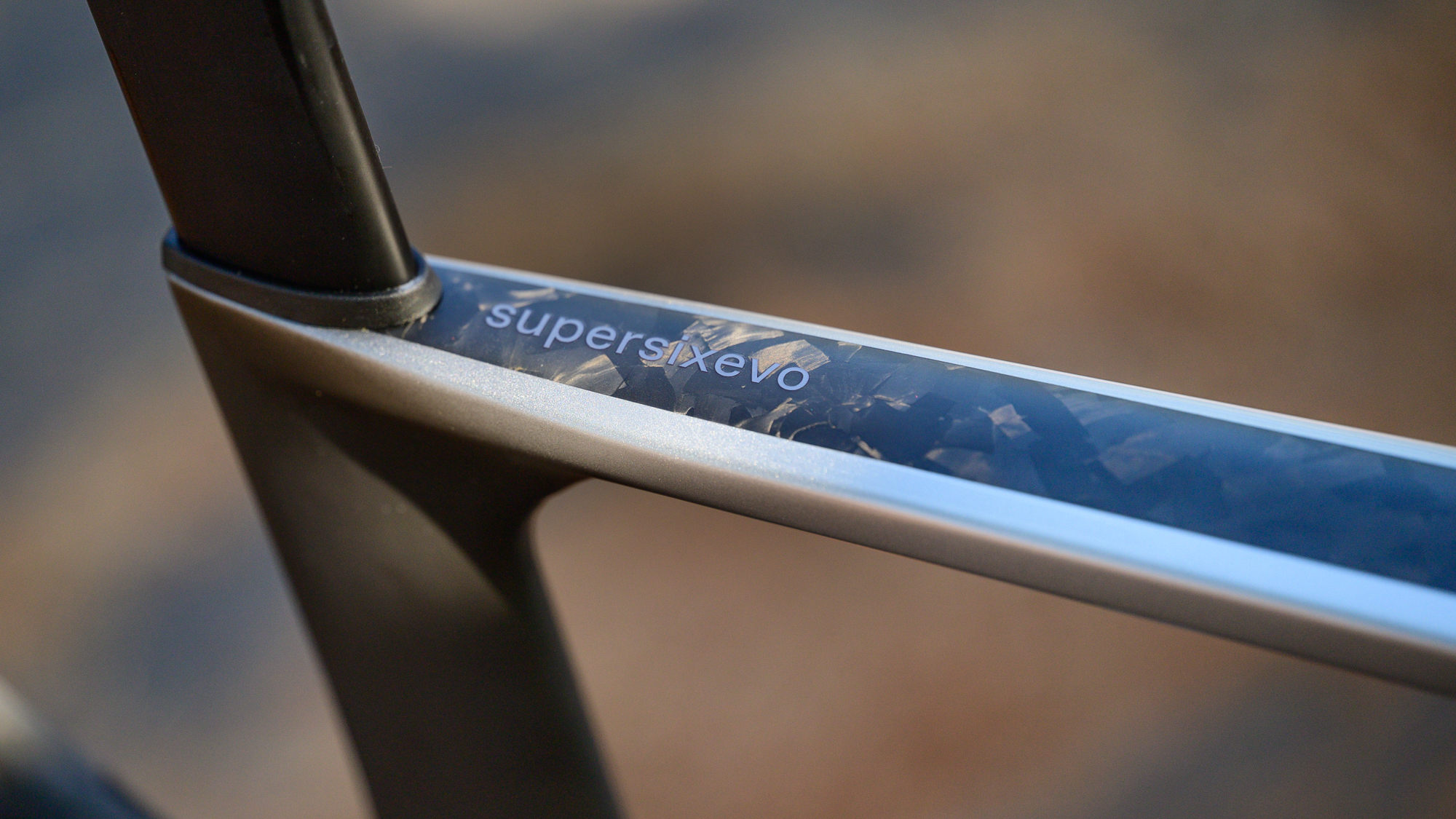
Design and aesthetics
In the past, the Hi-MOD variant of a Cannondale frame was the best you could get, but with the introduction of the SuperSix EVO 4, that basic understanding is changing. You can still get a Hi-MOD variant of this bike but now, that's the tier-two option. Introduced alongside this bike is the concept of Lab71 and a new level of performance, as well as pricing.
The 'standard' carbon level of frame which covers the Evo 1, Evo 2, and Evo 3 weighs in at 930 grams. If you want to go a bit lighter on the scales, the Hi-MOD options offer an 810-gram frame. Then, at the very top of the model range is the Lab71 model. It's a solid jump in pricing ($2,000 / £1,500) that nets you a more modest 40 grams of weight savings.
While the paint is certainly not the first thing I consider when buying a bike, the finish of a bike is an important part of the purchase to all of us, and a potential downfall is that the colour options are limited in the range. If you want a raw finish, as an example, that limits your choice to only the Evo 2. If you want the best Hi-MOD build, that means you've only got a single colour option.
My test model, the Hi-MOD 1, comes only with the Mercury paint scheme, but it's got a lot going for it and it looks a bit different than the picture would have you believe. The front of the bike, and the fork, uses a slightly warm silver with a deep gloss to it. You can't see it in the Cannondale pictures but in the sun there's significant metal flake and a richness and depth that’s hard to capture in an image. On the top tube you can really see the depth of this paint as it butts up directly against a layer of forged carbon fibre. From the side though, the glossy paint fades to a matte carbon at the rear.
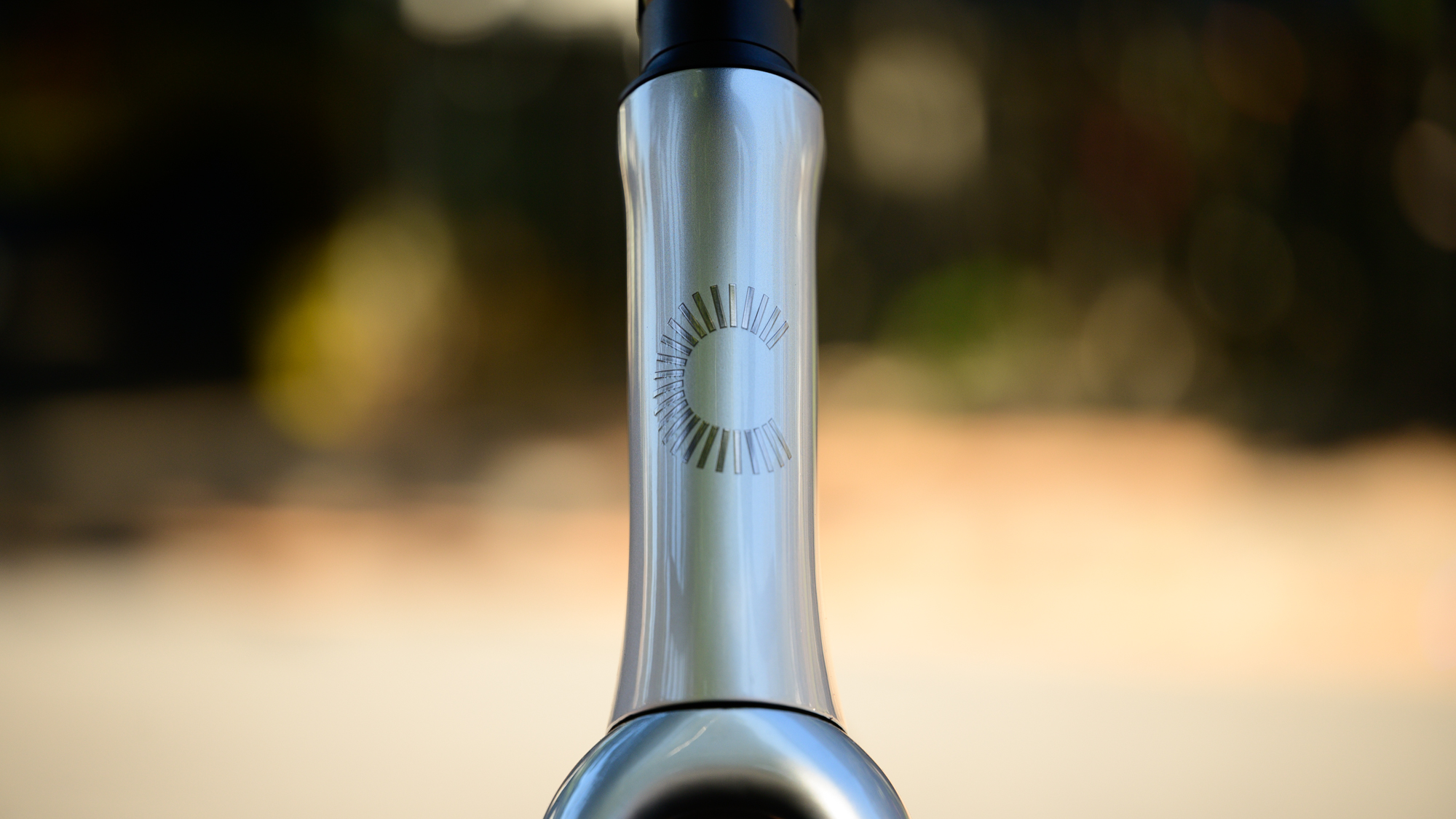

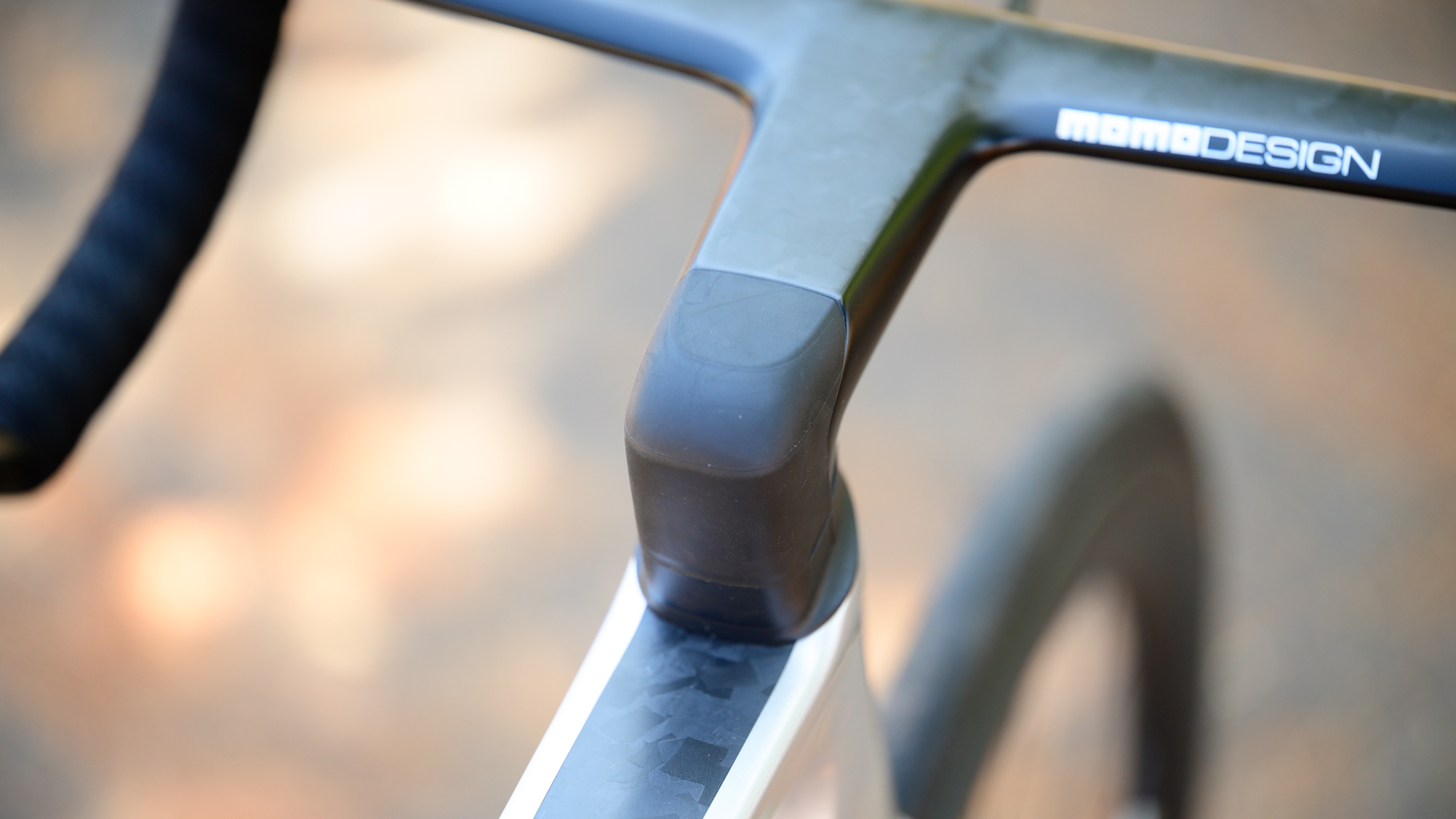
There's a lot to take in at the front in addition to the paint though. Aero bikes tend to net the most gains at the front, where the onrushing air is 'clean', and Cannondale seems to mirror this trend. Although the tubes are smaller than you might expect from a true aero bike, the headtube certainly isn’t that of a lightweight climbing bike. Instead, the deep integrated design helps add to the overall performance uptick compared to the last generation. Cannondale claims the 2023 SuperSix EVO will save you 12 watts at 45 km/h / 28 mph.
The steerer tube is a rounded triangle, which the brand refers to as the Delta Steerer tube. The design leaves room on each side for cables but it also keeps the headtube narrow. From a user perspective I'm not sure that it actually matters that much the specifics of how the cables are routed through the headtube. Although Cannondale plays up the unique shape of the steerer tube, other brands have figured out other unique ways to do the same thing. If you don’t like the one-piece bar and stem, you can swap it to a variety of other options that also route the cables through the stem.
For me, what actually catches the eye more than the front is the rear of the bike. In my opinion, this whole area is a work of art. The aero detailing is similar to other aero bikes with dropped seat stays but Cannondale does something different.
Just above the BSA threaded bottom bracket, the seat tube is incredibly thin before it flares out (sideways and rearwards) at the seat tube junction. As you continue up, the next section isn't that notable from afar. There's a hidden seat tube fixing bolt and a gasket where the seatpost inserts into the frame, and when you view it from the front or the rear, you'll see just how narrow it is.
That narrowness continues into the seatpost itself. The whole section is so narrow that Cannondale has had to move mounting for an internal electronic groupset battery to the down tube. There’s an element of Dr. Seuss to it where you question if the carbon will hold and yet, of course, it does.
The narrow seat post and lack of battery storage also has another effect on the design. I've never loved the way Cannondale uses two bolts to set the angle of the saddle, and that hasn't changed. It continues to be challenging to guess the angle a saddle will land at after torqueing down the bolts, but this is the best I've seen it, as both bolts are now easily accessible from below as they come down through the top of the seat post.



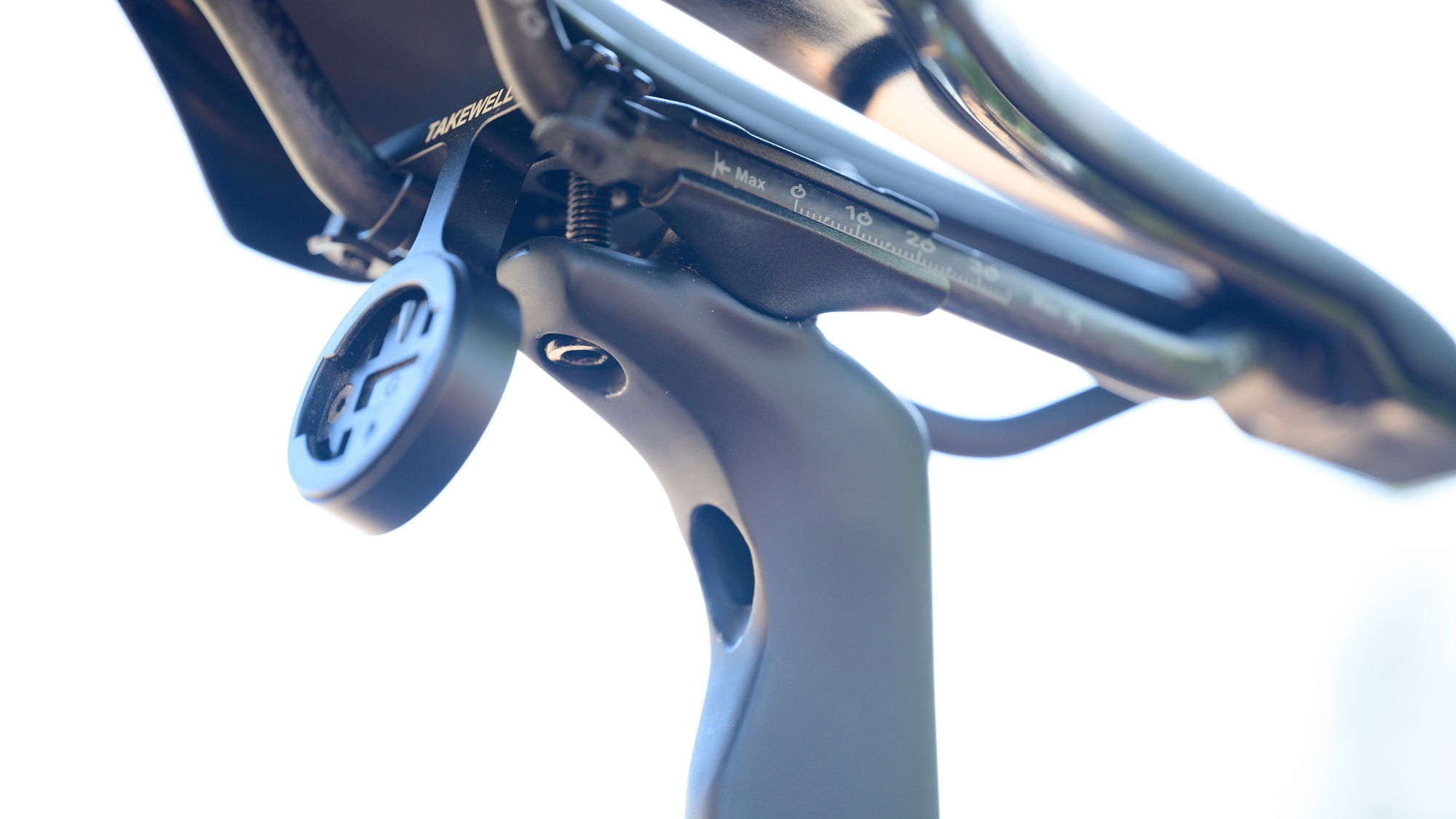

The build
Like the limited paint options, there are also some peculiarities with the build options. My test bike is the Hi-MOD 1 build; the highest Hi-Mod model and only beaten by the Lab71 options. It's only available with SRAM Red, so if you prefer Shimano you will need to either step up to Lab71 for Dura Ace, with a price increase of $2,000 / £1,500, or you'll need to step down to the Hi-MOD 2 build to get Ultegra Di2. If you decide to step down a model, the price savings is big but you do lose out on some of what Cannondale considers special about the latest SuperSix EVO.
Specifically, the brand claims "the frameset, seatpost, bars and wheels were all designed in unison" but the bars are unique to the top two models. With the Hi-Mod 1, the cockpit is a single piece unit Cannondale designed in collaboration with "legendary motorsport design firm, MOMODesign." If you decide to move down to the Hi-MOD 2 option, you have to sacrifice that cockpit. It still has a one-piece bar and stem but it’s not the same unit.
It's also worth noting that even with those top builds, a power meter isn't included.

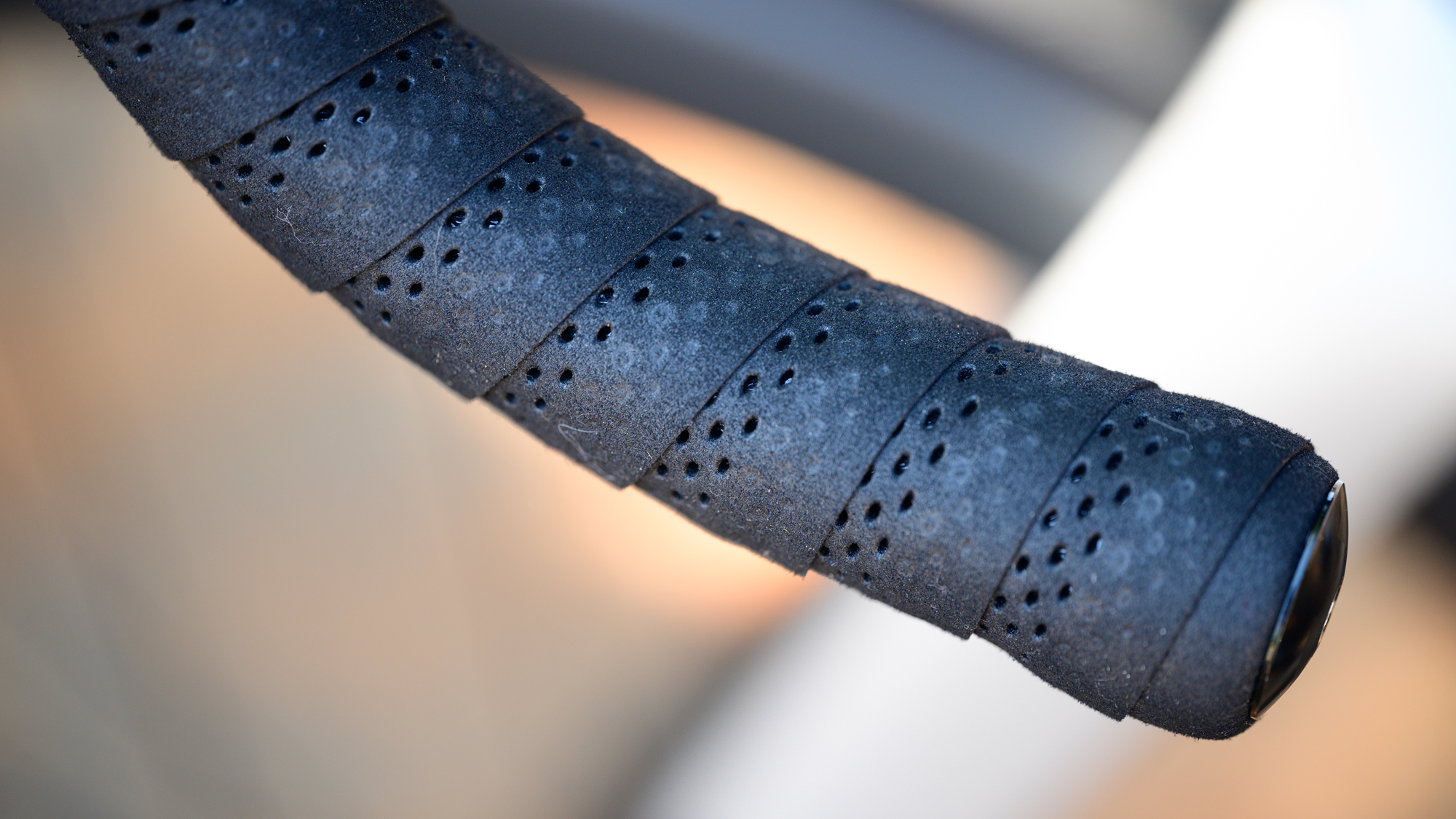
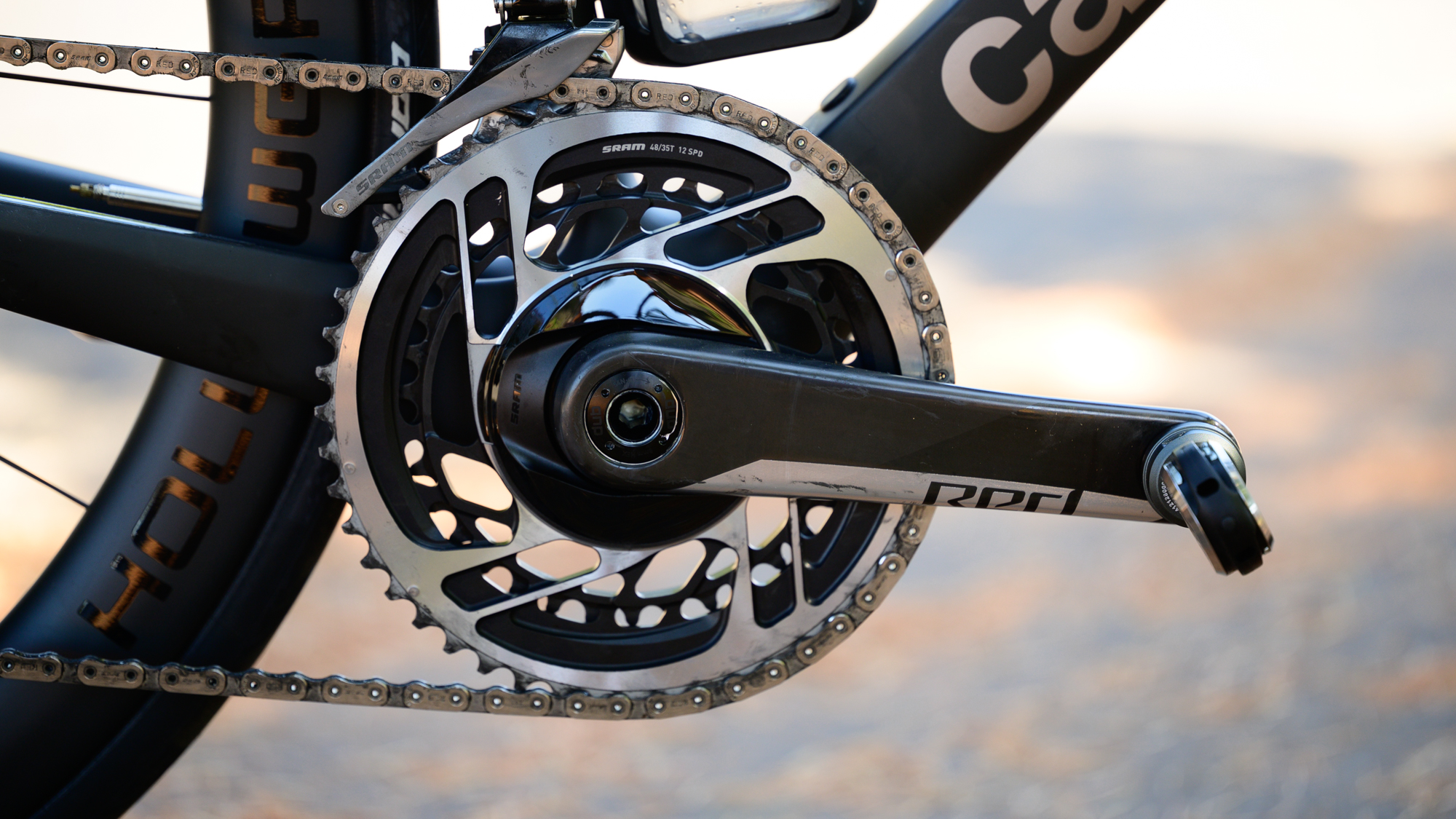
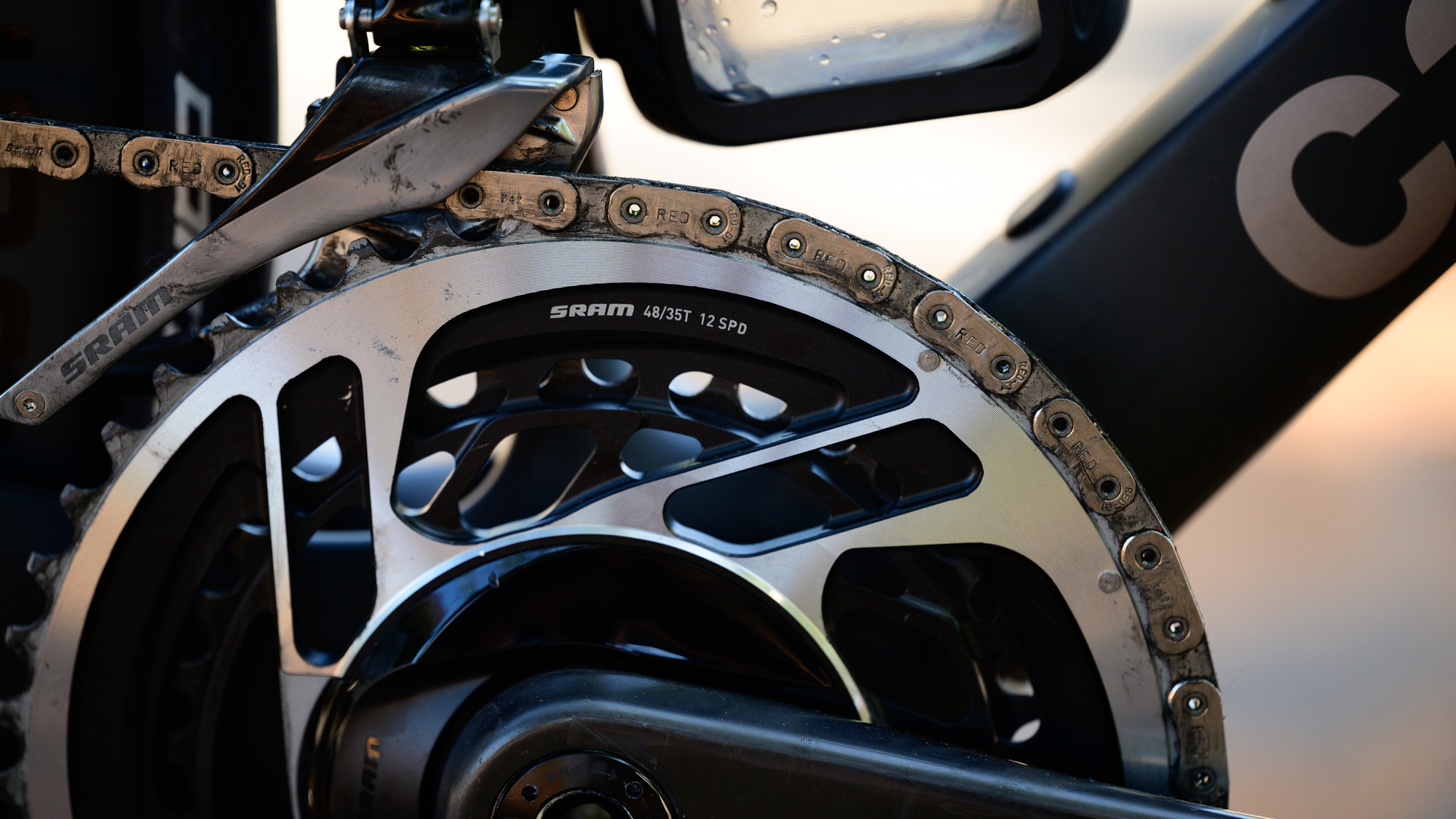
Regardless of the bigger picture though, my Hi-MOD 1 build starts with SRAM Red AXS. To that, Cannondale adds the SystemBar R-One designed in partnership with MOMOdesign wrapped with 3.5mm bar tape.
Gearing is 48/35 chainrings paired with a 10-28 cassette, both from the SRAM Red range. Wheels are the Cannondale R-SL 50 tubeless ready aero wheels and they come paired with 25mm Continental GP5000. The saddle is the Prologo Dimension NACK NDR with carbon rails.
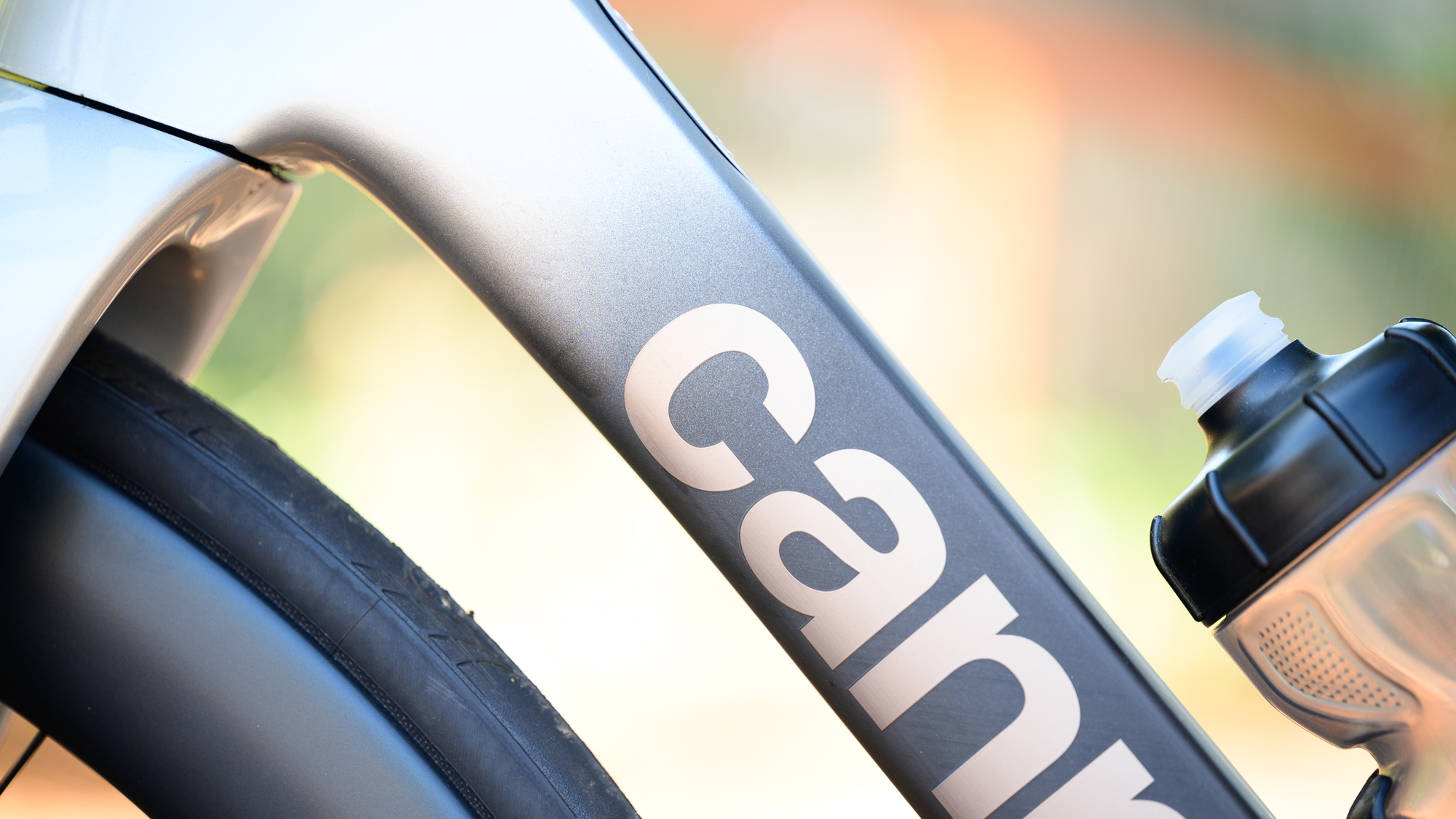
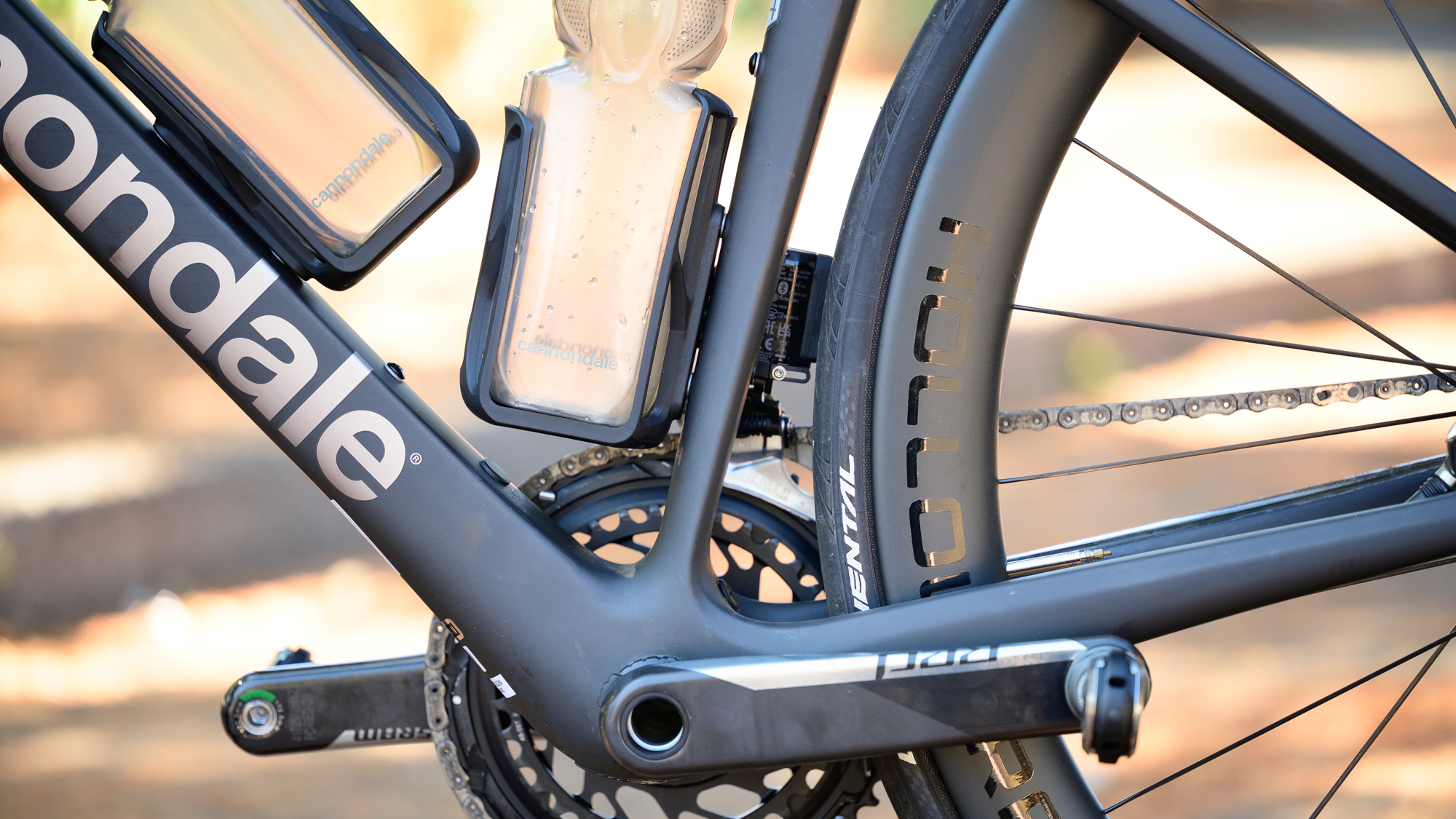
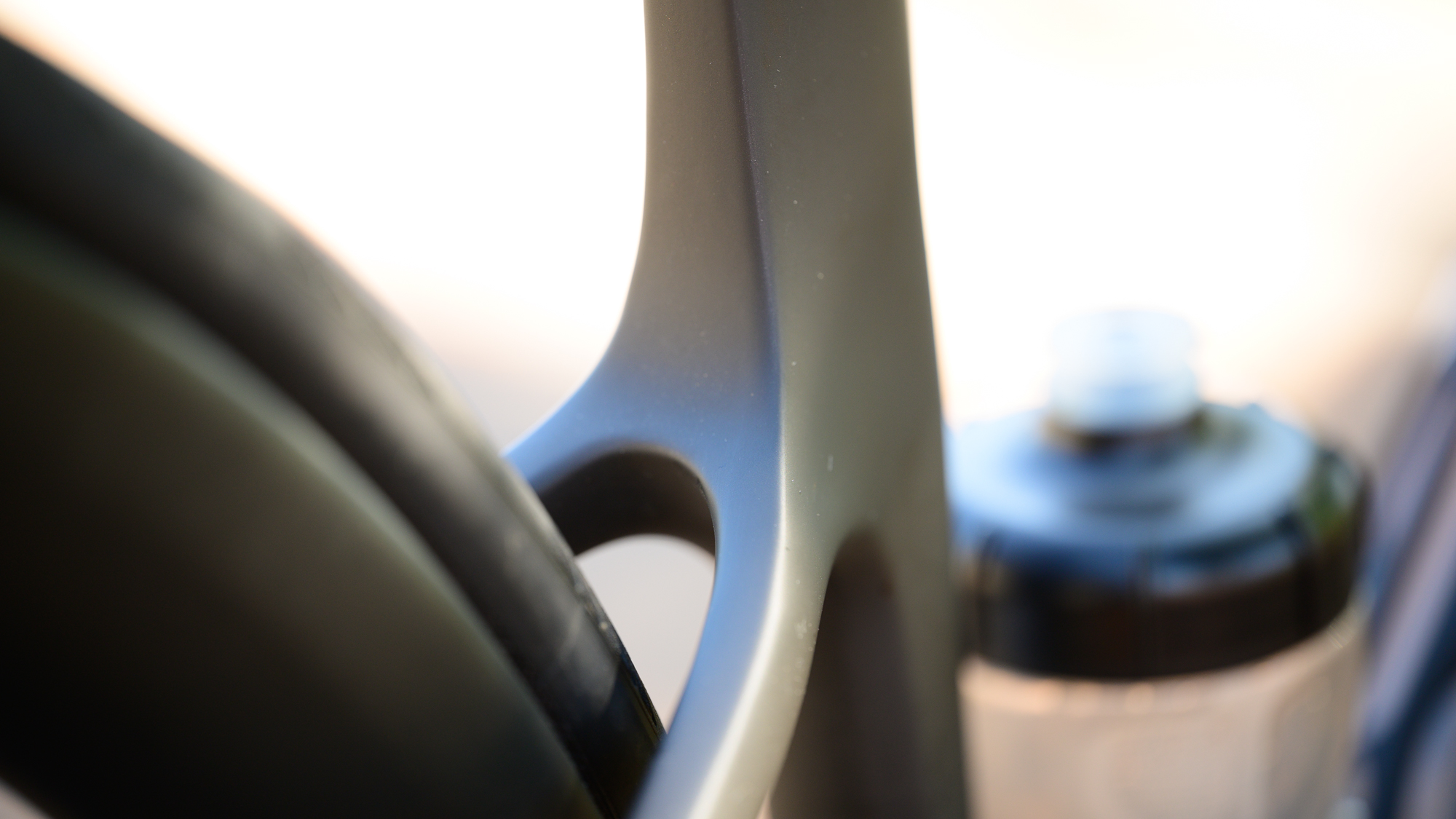
Performance
When I picked up the SuperSix EVO from a local shop, I chatted with the mechanic a bit and as we did, he said something which stuck: "no one wants race bikes anyway, just endurance bikes." We can argue if that’s true but it also highlights some of what I like about this bike.
The Cannondale SuperSix EVO transcends the idea of neat and tidy categories; it's fast but it's also comfortable. You can put on 30mm tyres, a light, and bigger bottles to ride all day, or you can also leave it the way it comes and race it in your local criterium. To accurately show that, I wanted to make sure I tested it in a variety of situations.
That started with what I call my midweek TT effort. It's not really a time trial but it is a mostly flat bike path that I take to the end and turn around for a 27 mile / 43.45 km door to door ride. There are some road crossings, and slower riders, so it's not exactly scientific but it's a solid effort with long sections of uninterrupted riding. When I set a new best time without making a single change to the bike, I started to get a sense this was a seriously fast bike.
During the summer I ride this route as much as four times a week and often on what most readers would consider super bikes. The last time I set a new record was almost a year ago on the Orbea Orca Aero full aero bike. That’s a bike that sacrifices weight for aero advantage and even goes so far as to include a UCI illegal fairing. I'm not forgetting that this isn't perfectly scientific test, but my faster time with the Cannondale SuperSix EVO is a good indication of just how aero it is.
In another example, I took the bike to a local group ride. It's not as fast as a race but it's a small group of experienced riders who ride hard. There are pacelines, known places for sprinting, and this is probably the kind of riding most people will use this bike for. If that sounds right to you, it excels.
Every time a gap would open in the paceline, the bike felt right at home jumping around a tired rider and closing it. Just like every Cannondale I’ve ever ridden, I almost felt compelled to ride like a fool who has energy to spare. Even when that energy was flagging, the uphill sprint point seemed like a great idea.
To put it another way, the SuperSix is a fun and responsive bike that urges you on. It's more than aero enough to challenge one of the most extreme aero bikes on the market, and at 7.33kg (excluding pedals) it can climb well. I'll stop short of saying it's market leading on the weight front, though, since my colleague's 58cm Tarmac SL7 weighed in at 7.29kg with pedals and a power meter, and the new semi-aero Factor O2 VAM, also 58cm, was 6.71kg.
Regardless of that, it was a positive start on the performance front, so it was time to address that comment about endurance bikes. I've done a couple of 200-ish mile (322 km) rides this year and this seemed like the perfect opportunity to do one more. This time I opted to head to the coast and back on a route that covered 215 miles / 346 km and roughly 12,000 ft / 3658 metres of elevation.
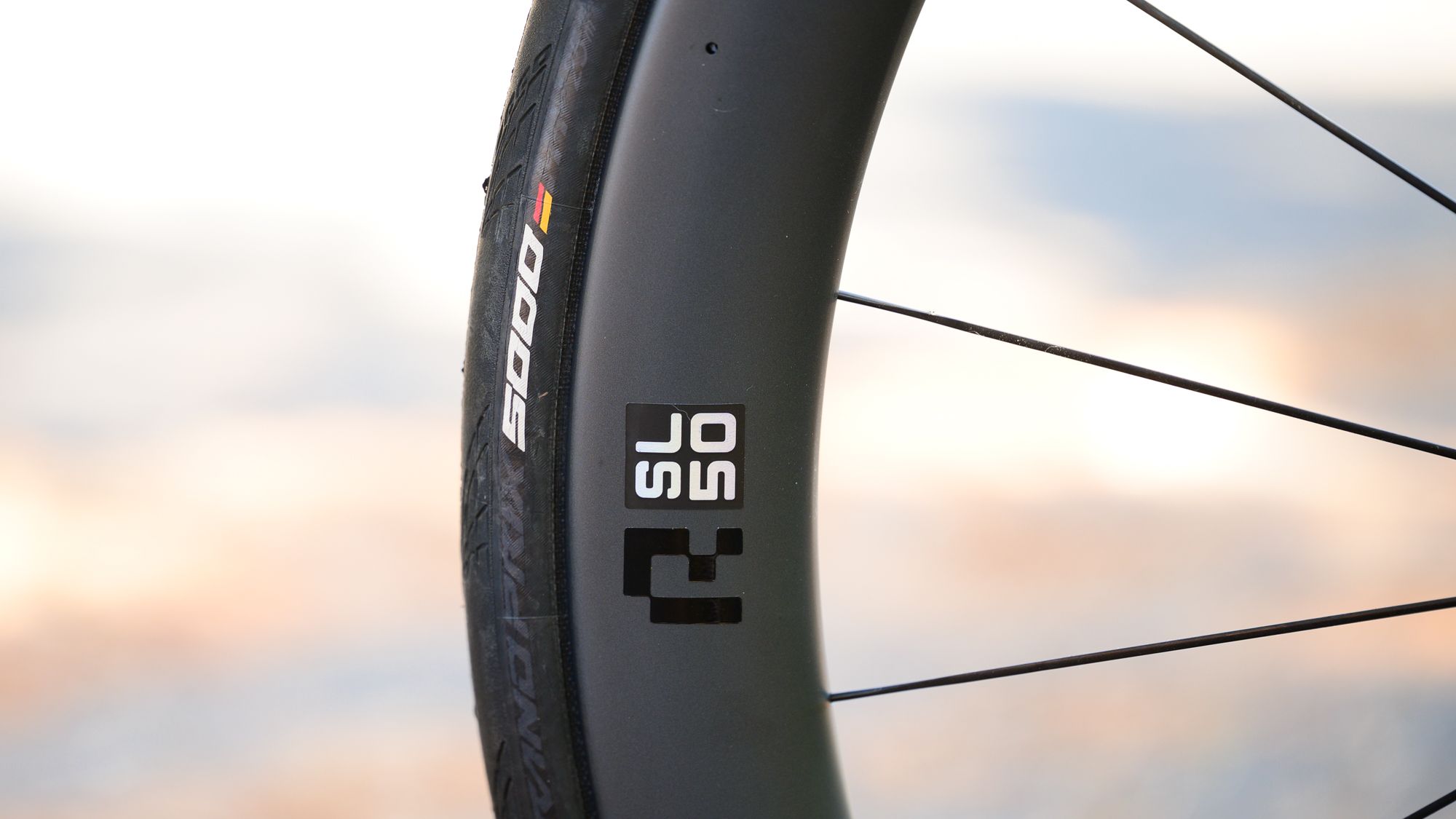

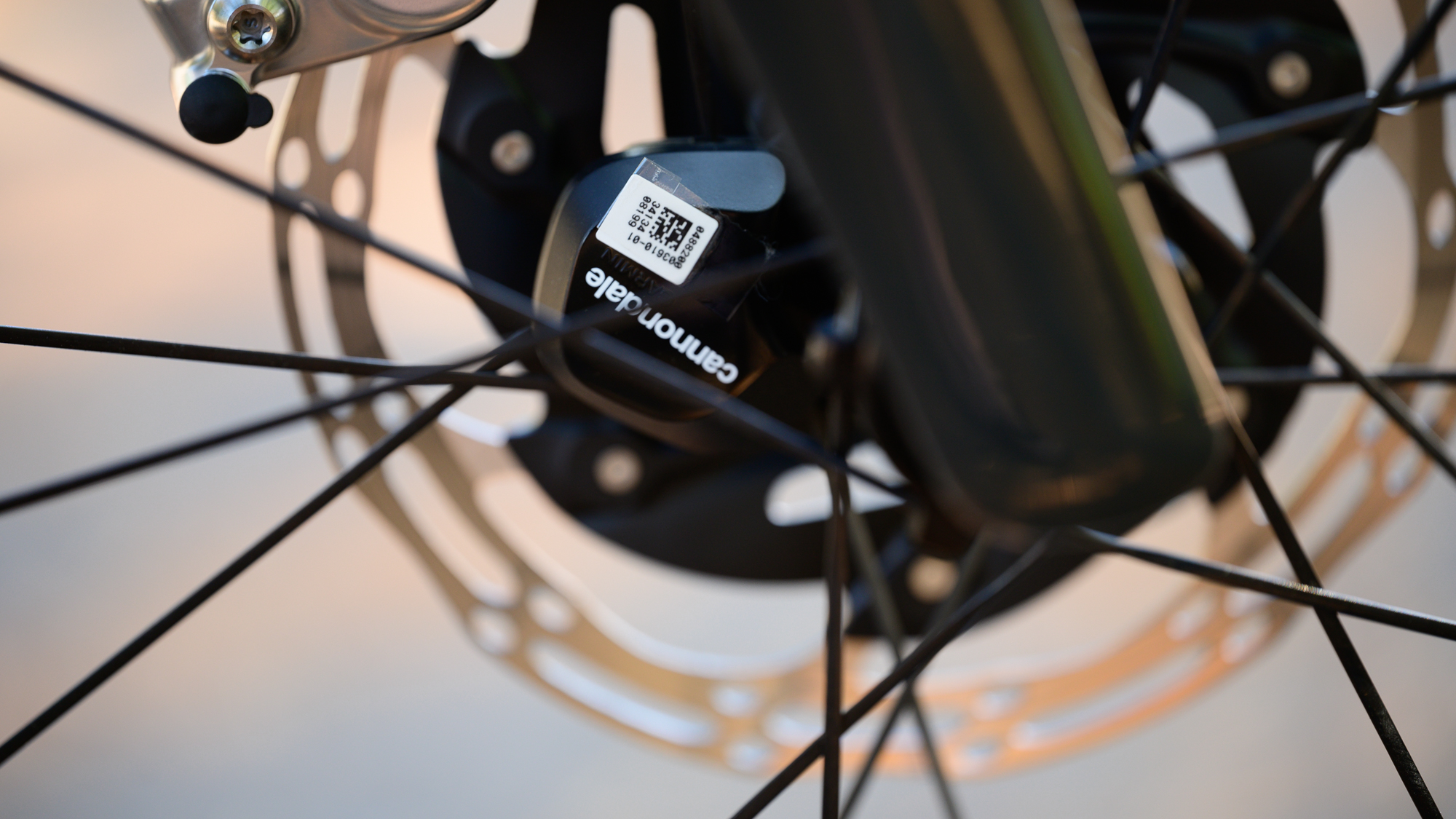
In preparation for that ride, one change I made was to swap the included HollowGram R-SL 50 wheels to a set of Zipp 353 NSW wheels.
Quite often, the included wheels on any bike, even one this expensive, end up being replaced. Given my time with them, I’d argue rethinking that with the HollowGram R-SL 50. The wheelset weight is a reasonably competitive 1520 grams and the rear hub uses DT Swiss 240 EXP internals. At a depth of 50mm paired with a 21mm internal/32mm external width, they look to be optimised for the included 25mm tyres but they feel stiff and responsive. I never felt side to side flex and when I was ready to jump, the wheels were always right there with me.
I really only made the change as a quick way to make use of the already-mounted Cadex 28mm tyres. It also presented a great way to test the frameset in isolation. I know how those wheels ride already, likewise the Cadex tyres and the SRAM Red groupset, so here was a chance to focus on the frame alone.
To get straight to the point, the main thing I found on the long ride was just how efficient the SuperSix EVO is. I’d noticed on other mid-distance rides that I was frequently able to pass other riders while coasting downhill but on a ride of this distance, it stood out. The cornering is stable enough that I felt comfortable staying in a deep aero tuck (sorry UCI) and every descent seemed to be over in a flash.
I did also find a couple of small negatives on the big ride. The included ReGrip Aero bottles and cages may be aerodynamically superior but the bottles only hold 600ml. This will be fine for most rides, but I wanted more here. Given the cages didn't play too nicely with larger bottles, I was forced to swap both out.
I also didn’t love the outfront mount and included GoPro/light mount. The connection to a Garmin computer felt a bit vague on centre while the light sits so far back, and close, that I was limited how far up I could angle it. These are obviously small details, and likely not that relevant for a pure race bike, but you can do a lot with the SuperSix and these details are noticeable.
Still, the fact that it comes with bottles, cages and an out-front mount at all is a feature that not every bike can boast, so take my criticisms here with a big grain of salt.
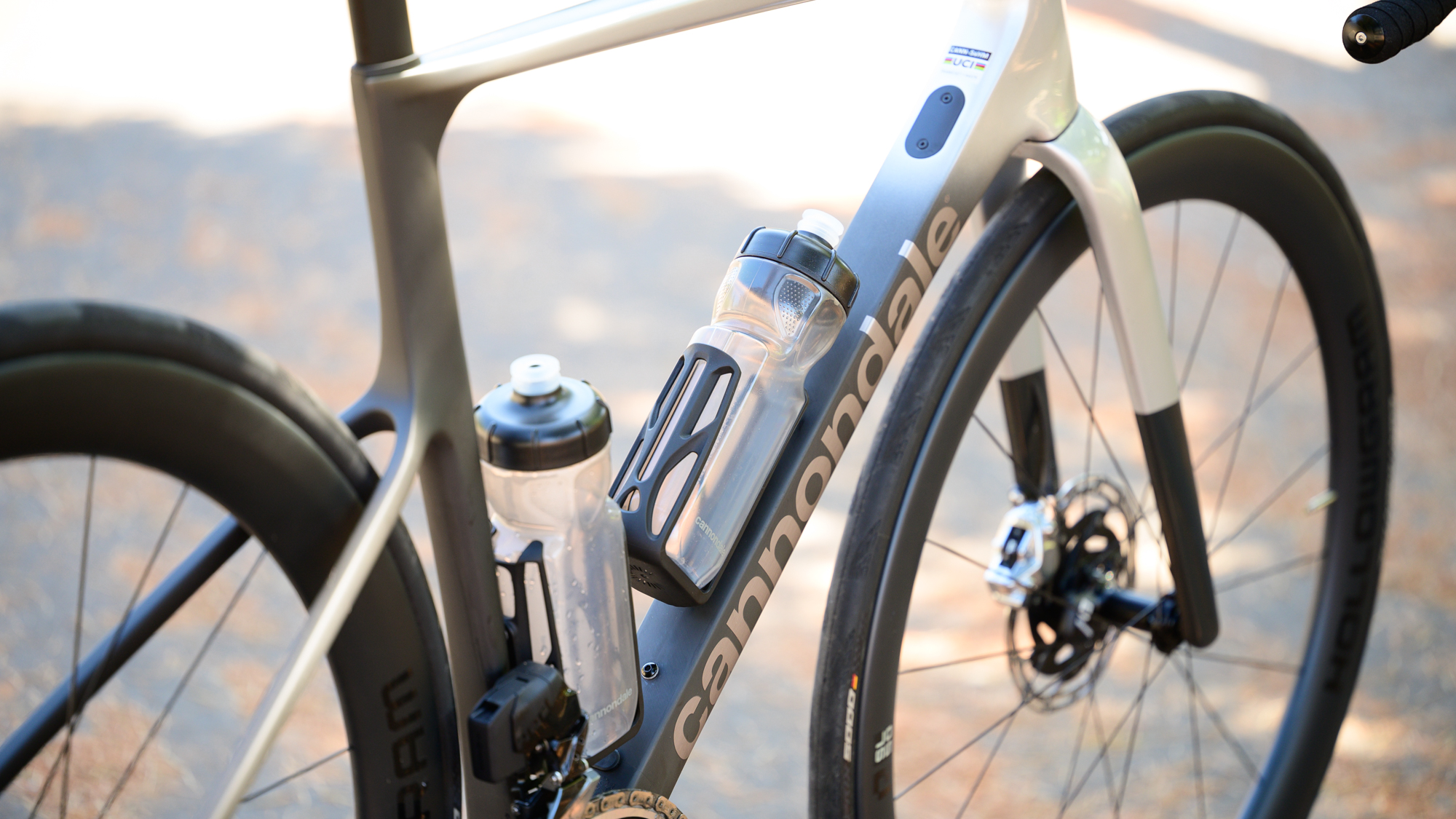
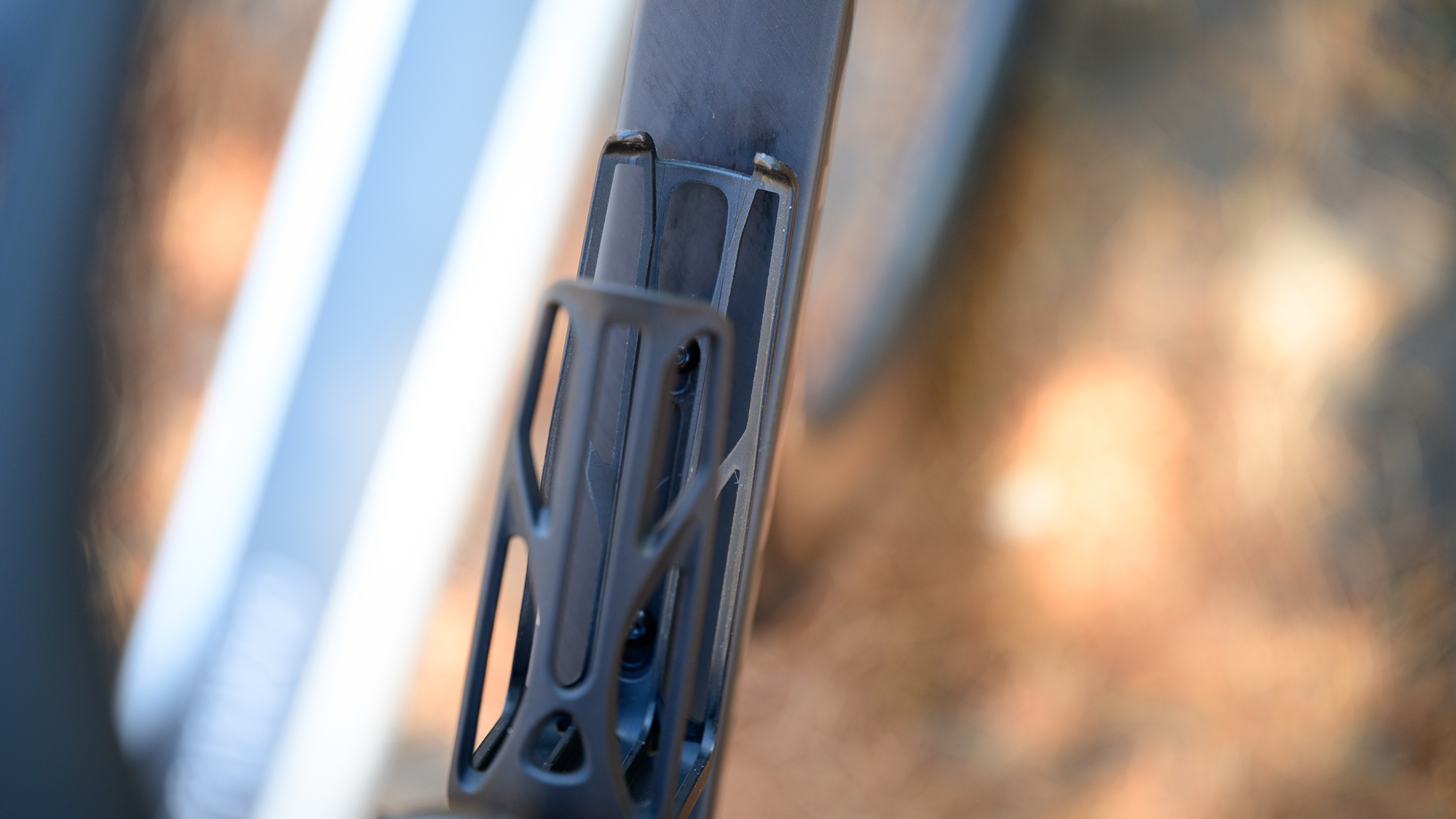
Value
My initial reaction to this section was to say the SuperSix EVO was sitting above industry standards. Lab71 is, in some ways, a reaction to S-Works and the Tarmac is sure to be a bike that will see cross-shopping. That frame is $5,500 / £4,500 while the Cannondale Lab71 is $6,000 / £4,500. You do get, arguably, better paint options on the Lab71, and it's 40 grams lighter. With leaks of a new Tarmac already in the wild, I expect things are about to change there anyway.
I didn't review the Lab71 though and when I looked at the Hi-MOD pricing, the story is different. The bike I tested retails at $13,500 / £10,500 and the frameset is $4,500 / £3,750 making it a slightly more appealing proposition against the same S-Works Tarmac. Even if you take into account the lack of including a power meter, which is a definite negative, this is a less expensive bike.
There are other bikes worth considering as well. The Enve Melee is almost exactly the same geometry as the Super Six Evo Hi-Mod and the Cannondale is cheaper even if you consider the lack of bar and stem that the Enve includes. The new Look 795 Blade RS is another contender which is also more expensive.
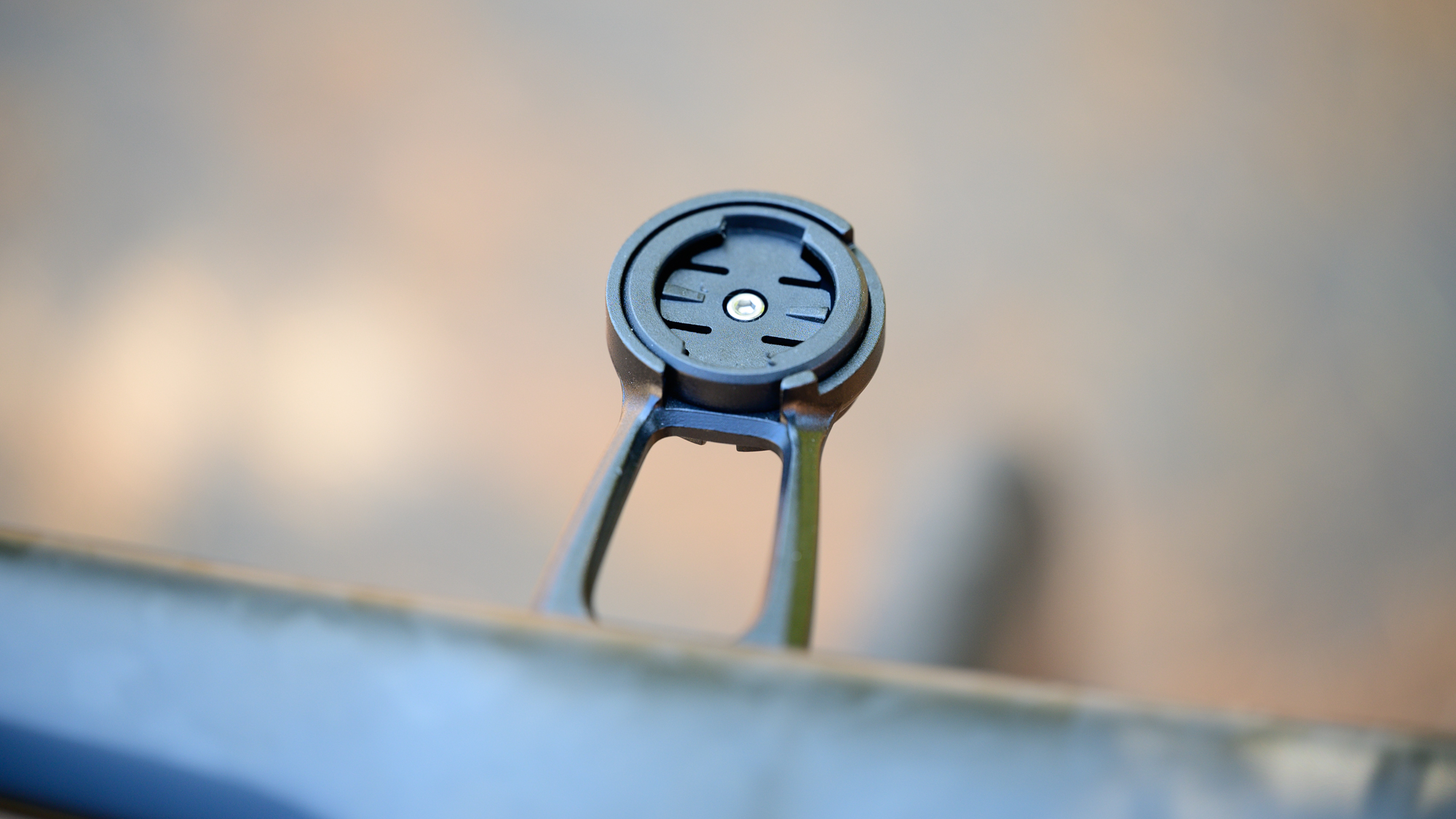
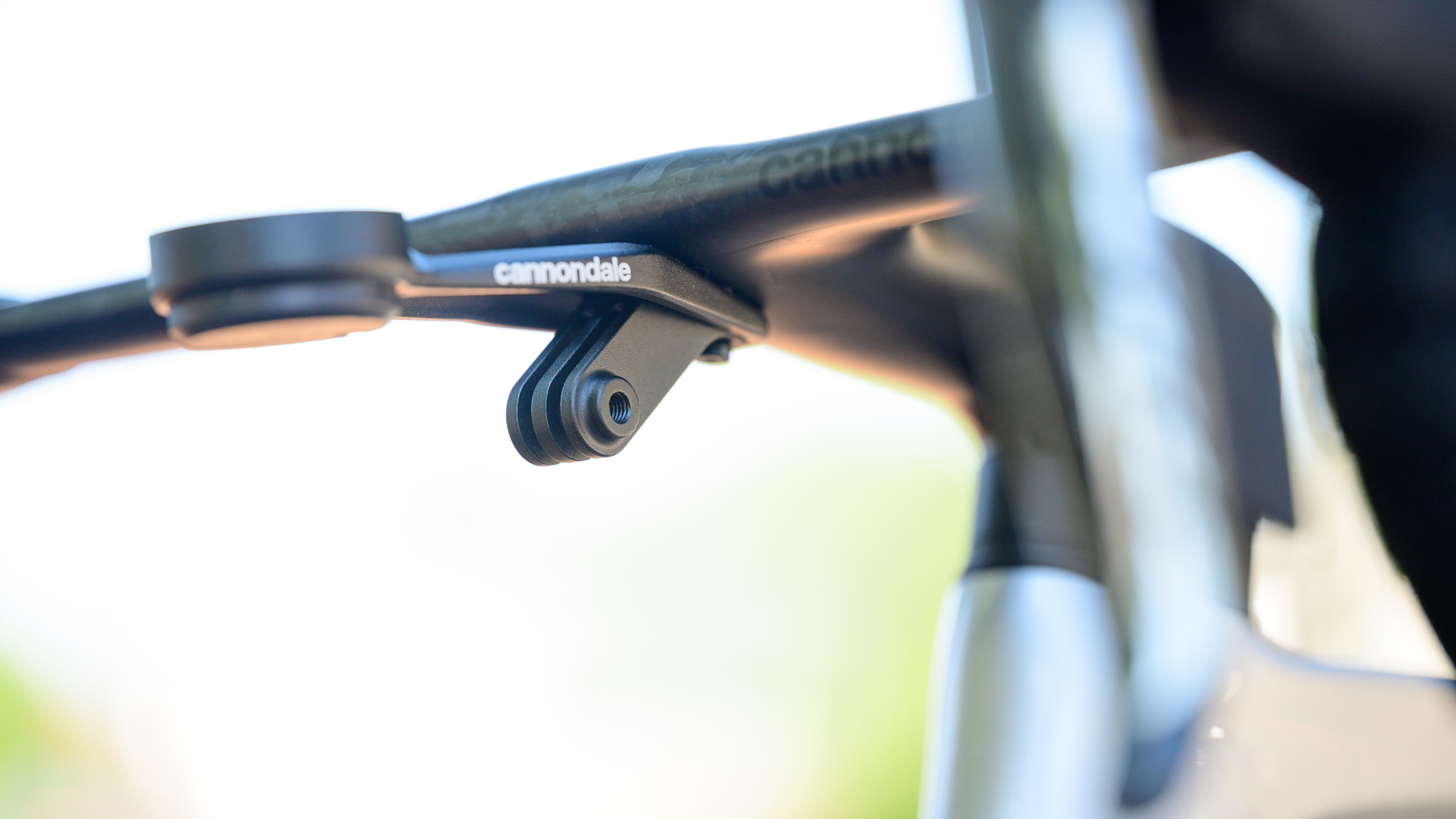

Verdict
I test a lot of bikes and some of them aren't brilliant. When I ride a few in a row that I don't love, I start to think maybe it's me; can I really even tell what a good bike feels like? Then I swing a leg over a bike like this Cannondale SuperSix EVO Hi-MOD 1 and I know I can. There are rarely bad bikes but there are bikes that don't feel as exciting to ride, then there's bikes like the SuperSix EVO. This is an exciting bike.
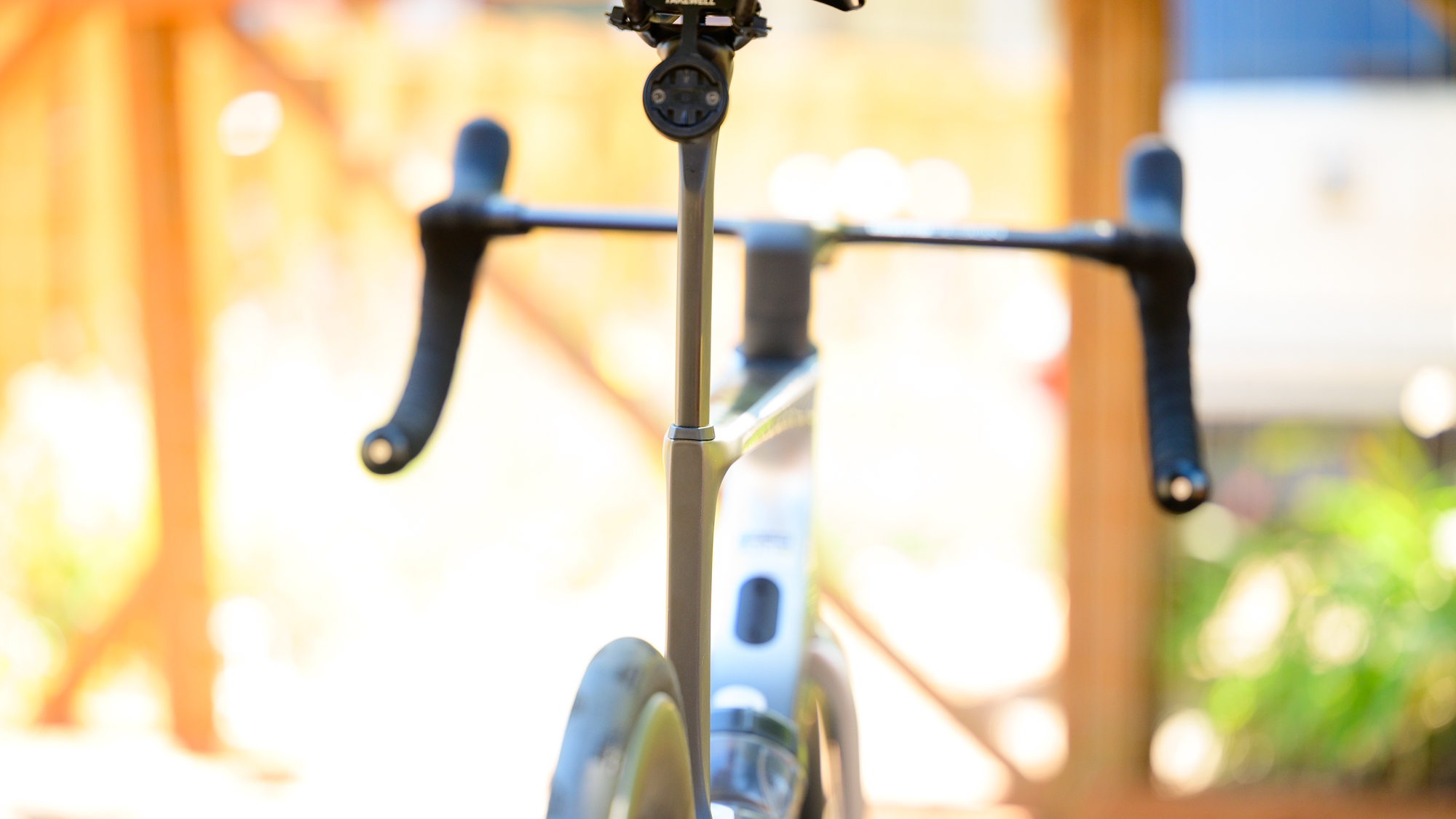
It’s not the quality of being exciting, or even the ability to win races, that sets this bike apart though. Instead it’s the focus on doing everything and the way that speaks to most people. The SuperSix EVO is exciting but it’s also comfortable. You can take it to a group ride or a local weekly race but you can also do long distances with it. I’d love to see more colour and groupset options across the range, and better pricing on the Lab71 version, but if you want a road race bike that isn’t going to hold you back no matter what you want to do with it, the SuperSix EVO is a perfect choice. The only reason I’d suggest looking elsewhere is if you want an even more specialised bike that is perhaps longer and lower or lighter.
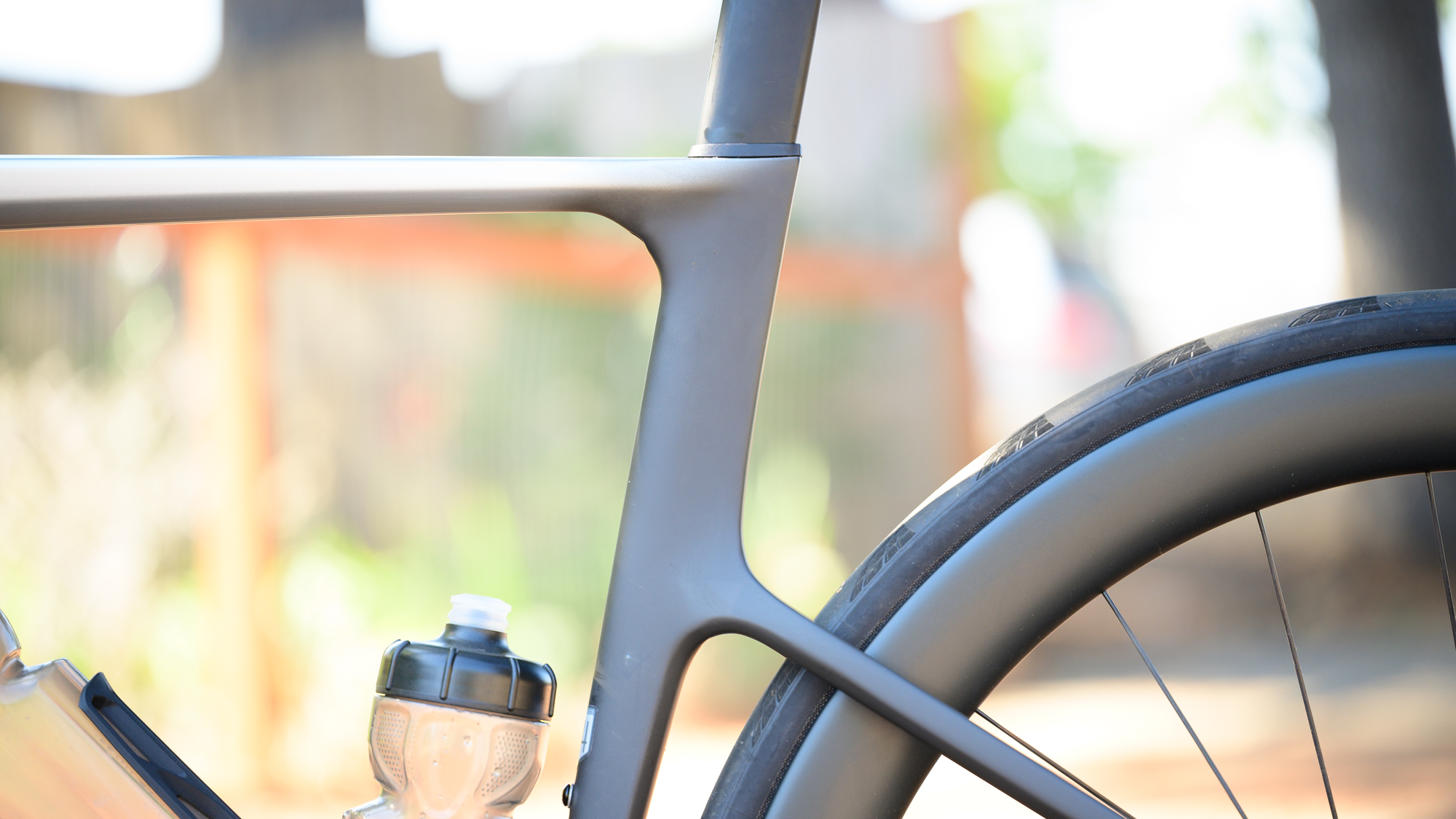
| Design and aesthetics | There are spots on this bike I can stare at for a long time. The carbon shapes are incredible. The only thing I’d love to see done different is to have more of the paint options available for more of the builds. | 9/10 |
| Build | The Hi-MOD 1 build happens to be almost perfect for me but it’s missing a power meter. It’s odd though not to have a Shimano option at this build level and it’s also odd not to have SRAM builds at the higher or lower price points. | 8/10 |
| Performance | I don’t have a wind tunnel but I set a personal speed record and I can pass people while descending without pedalling. This bike feels like one of the fastest I’ve ever ridden. | 10/10 |
| Weight | There are some bikes that are lighter but the SuperSix Evo compares favourably to a number of all-around race bikes. | 8/10 |
| Value | In the Hi-Mod variant Cannondale is undercutting a lot of the top competition. You can find incredible bikes for less but this is a decent value despite the high-end price | 8/10 |
| Overall | Row 5 - Cell 1 | 86% |
Josh hails from the Pacific Northwest of the United States but would prefer riding through the desert than the rain. He will happily talk for hours about the minutiae of cycling tech but also has an understanding that most people just want things to work. He is a road cyclist at heart and doesn't care much if those roads are paved, dirt, or digital. Although he rarely races, if you ask him to ride from sunrise to sunset the answer will be yes. Height: 5'9" Weight: 140 lb. Rides: Salsa Warbird, Cannondale CAAD9, Enve Melee, Look 795 Blade RS, Priority Continuum Onyx
